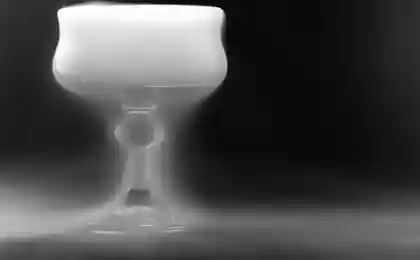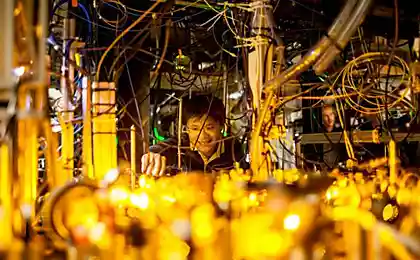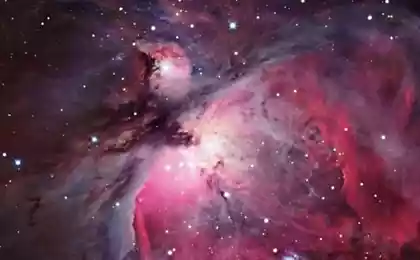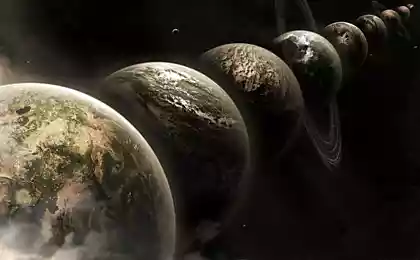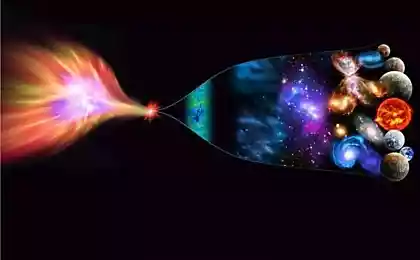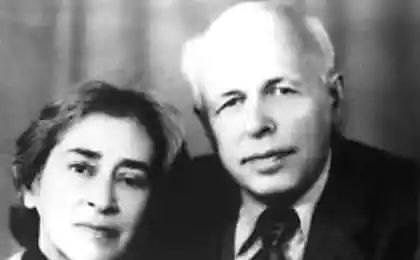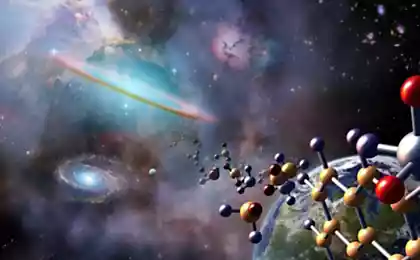1042
Simple: bosons, fermions, quarks, and other elementary components of the Universe
Because of the vast terminology of the most popular books and articles on particle physics don't go further the fact of the existence of quarks. Difficult to discuss if a wide audience not fully understand the basic terms.
Student at MIPT and the laboratory of fundamental interactions Vladislav Lyalin took on the function of guide in what's called the Standard model — the dominant physical theory that explains all known particles and their interaction with each other, that is, the structure of the Universe at the deepest level.

The structure of the substance
So, everything consists of molecules and molecules consist of atoms. The atom consists of a nucleus and cloud of electrons around it, which make much more complex movement than simple rotation. - About 10 thousand times smaller than the atom, although this is almost all of its mass and consists of protons and neutrons.
As a rule, in most school physics courses end, but that's not the end of physics. In 50-ies of the last century, scientists knew about the existence of five particles, which they called basic. It was a proton, neutron, electron, photon, and electron neutrinos. After a few decades (with colliders) particles, which should be counted among the elementary, became a few dozen, and that number is growing.
The term "elementary particle" had to be revised — and at the same time to come up with a new theory, to further delve into the structure of matter. Over time, developed the theory called the Standard model describing all known interactions (except gravity).
Since ancient times, the matter and forces (interactions) in physics have been separated. This idea is present in the Standard model. All elementary particles in it are divided into "bricks matter" is fermions and vectors of interaction — bosons. These classes of particles differ greatly from each other, one of the most striking differences is the absence of Pauli exclusion principle bosons have. Roughly speaking, in one point of space can be no more than one fermion, but unlimited number of bosons.
Bosons
In the Standard model all six elementary bosons. The photon has no electric charge, it transmits the electromagnetic interaction — the one that binds atoms in molecules. Gluon transmits the strong interaction and has its own kind of charge (this has to be said).
It is a strong interaction responsible for nuclear forces that binds protons and neutrons in the nuclei. W+, W - and Z0 means that the bosons are charged, respectively, positive, negative and neutral (not charged). They are responsible for the so-called weak interaction, which is able to transform one particle to another.
The simplest example of a weak interaction is neutron decay: one of the quarks making up the neutron emits a W-boson and turns into another quark, and W boson decays into an electron and a neutrino.
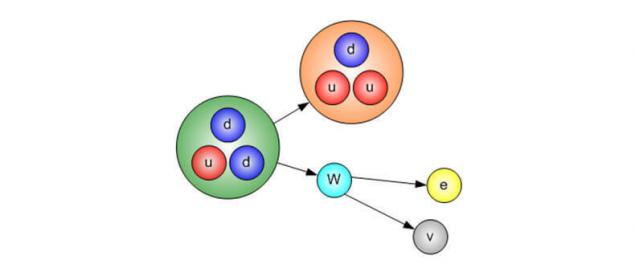
Is the last boson — the Higgs boson. Theoretically, it was predicted in the 60-ies of the last century, but experimentally its existence was proved only in 2013. He is responsible for the inertial mass of elementary particles — the mass responsible for the effects of inertia, not gravity. Quantum theory, which would bind and inertia, and gravity, yet.
Fermions
Elementary fermions is much more than elementary bosons. They are divided into two classes: leptons and quarks. They are distinguished by the fact that quarks participate in strong interaction, and leptons — no.
Leptons
Leptons come in three generations, in each generation, two lepton — one charged and one neutral. The first generation: electron and electron neutrino, the second one muon and muon neutrino, and the third Tau-lepton and Tau-neutrino. Leptons are very similar to each other, muons and Tau-leptons(like electrons) can form atoms, replacing the orbitals of the electrons.
The main difference is in the mass: the muon is 207 times heavier than electron, and Tau-lepton is 17 times heavier than the muon. Neutrino needs to be a similar story, but their mass is so small that it is still not measured. These masses are exactly nonzero, the proof of this fact was awarded the Nobel prize in 2015. The muon and Tau lepton is unstable: the life time of muon is about 0.2 millisecond (which is actually fairly long), Tau-lepton decays approximately 17 times faster.
Features neutrinos are that they participate only in weak interaction, because of this they are very difficult to detect. They can also arbitrarily change your grade: for example, an electron neutrino can spontaneously turn into a muon neutrino, or Vice versa. In contrast to the bosons, the leptons are the antiparticles. Thus, leptons do not 6, but 12.
Quarks
In English the word funny can be "funny" and "strange". Here the quarks just is funny. It's funny they are called: top, bottom, strange, charmed, lovely and true. And they are acting very strange. There are three generations of quarks, two quarks each, and just as they all exist antiparticles. Quarks participate in electromagnetic and weak interactions, and strong.
For the record: the fermions participate in the strong interaction are called hadrons; thus, hadrons are particles composed of quarks. So the Large hadron Collider, in fact, called hadron: there is a push protons, or the nuclei of atoms (hadrons), but not electrons. Quarks like to be formed into particles of three and two quarks, but never appear one at a time. This is their oddity. Particles of three quarks are called baryons and two mesons.
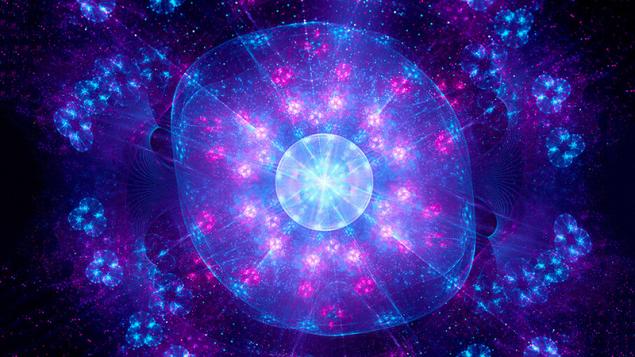
Why they do that? This is due to the peculiarities of the strong interaction that holds the quarks in the hadrons. The strong interaction is very interesting: instead of a single charge, as in the electromagnetic, strong their there are three. And it turns out that there are only neutral particles and the neutral particles may be, only if it has either three different charge of the same sign, or two identical charge of opposite sign.
Due to this feature (and for convenience) charges began to be called red, green and blue, and the corresponding negative charges — anticrisis, antizelenye and antikink. It turns out that if you take red, green and blue, we get white, that is neutral; if you take red and anticrazy, we also get the white. It's catchy, but it is worth emphasizing that it is irrelevant to the flowers, to which we are accustomed in life.
It's just beautiful and an excellent analogy with the mixing. In the Standard model each quark can be any of the three colors, and antiquark — any of the three "anticodon". It turns out that none of the quarks can not be directly registered, it's available there may be only colourless particles, while quarks are "colored". This feature of their behavior is called confinement that English is literally translated as "imprisonment".
Confinement
Well — let's say that quarks can not exist freely. But what if you just take a meson consisting of two quarks, and to break it into two parts? If we get two quark? (Actually no.) Imagine that a meson is very strongly stretched. In contrast, the electromagnetic, the strong force is stronger up to a certain limit, the interacting particles far away from each other.
It's like a spring: the more it is stretched, the more it will compress and the more energy will be. To stronger to pull the quarks, the strong interaction creates a new gluons. And the more we stretch, the more gluons is created.
But at some point, the energy created by these gluons becomes so large that it becomes more profitable to create a new pair quark-antiquark than to continue to produce gluons. A lot of the gluons disappear, instead they are the quark and antiquark. At the moment when quark-antiquark pairs of the four quarks creates two mesons, each of which is colorless.
It may seem that the theory is closed on itself and that quarks don't actually exist, and confinement, in fact, a crutch that was invented only in order to stop looking for quarks; that's just a convenient model that has no physical basis. For a long time in scientific circles, went the thought.
However, later theoretical studies and recent experimental show that under certain conditions, the quarks can leave the hadrons. Moreover, this state of matter existed almost immediately after the big Bang, and only after strong cooling associated quarks into hadrons. This state of matter are now investigating at the Large hadron Collider the ALICE experiment. To obtain the desired temperature of two trillion degrees. It is a state of matter called quark-gluon plasma.
To understand that there is a quark-gluon plasma, is to draw an analogy. Imagine water in zero gravity. It is in a liquid state and surface tension forces, it has the form of a ball — you can tell that she is trapped in this ball. Start to increase the temperature. When it reaches 100 degrees, water begins to boil, to evaporate and completely become a vapor, which will not be the forces of surface tension.
The phenomenon of turning water into vapor is called a phase transition. If you continue to heat the steam, at about 1 400 degrees, the water molecules will split into hydrogen and oxygen — dissotsiiruut, and the water will be a mixture of oxygen and hydrogen plasmas. This is another phase transition. Now take the gas but not molecules of water, and of hadrons — and will begin to heat up.
Will have to heat very much, because the phase transition requires a temperature of around two trillion degrees. At this temperature the hadrons like "dissociate" into free quarks and gluons. Thus, the hadron will make a phase transition into a state of quark-gluon plasma. This phenomenon is called particles, that is, the process of liberation of quarks from hadrons.
In search of a theory of everything
Recent experimental confirmation of the Standard model waited about 50 years, but now the Higgs boson is found: what next? Is it possible to think of the great open ended? Of course not. The standard model originally did not claim to be a theory of everything (because it does not include the description of gravitation). Moreover, last December the ATLAS and CMS collaborations have published articles on the possible discovery of new heavy particles beyond the Standard model.
10 reasons our universe a virtual reality
Quantum psychology: WHAT we create unconsciously
And physics is not sad, but rather glad, because he Large hadron Collider was not built in order to confirm the already known, and to open new. And so the same "new physics" does not mean that the Standard model will be erased and betrayed anathema. We're scientists, and if something works (and the Standard model is proved), then it must be a special case of any new theory or a new theory would be contrary to the old experiments.
For example: Newtonian mechanics is a good model to describe motion with a low (much less than the speed of light) speeds — despite the fact that we now know the special theory of relativity. Similarly, when a new model (or modifications of the Standard), there will be conditions under which it is true that we know now.published
Author: Vladislav Lyalin
P. S. And remember, just changing your mind — together we change the world! ©
Source: theoryandpractice.ru/posts/14256-standard-model
Student at MIPT and the laboratory of fundamental interactions Vladislav Lyalin took on the function of guide in what's called the Standard model — the dominant physical theory that explains all known particles and their interaction with each other, that is, the structure of the Universe at the deepest level.

The structure of the substance
So, everything consists of molecules and molecules consist of atoms. The atom consists of a nucleus and cloud of electrons around it, which make much more complex movement than simple rotation. - About 10 thousand times smaller than the atom, although this is almost all of its mass and consists of protons and neutrons.
As a rule, in most school physics courses end, but that's not the end of physics. In 50-ies of the last century, scientists knew about the existence of five particles, which they called basic. It was a proton, neutron, electron, photon, and electron neutrinos. After a few decades (with colliders) particles, which should be counted among the elementary, became a few dozen, and that number is growing.
The term "elementary particle" had to be revised — and at the same time to come up with a new theory, to further delve into the structure of matter. Over time, developed the theory called the Standard model describing all known interactions (except gravity).
Since ancient times, the matter and forces (interactions) in physics have been separated. This idea is present in the Standard model. All elementary particles in it are divided into "bricks matter" is fermions and vectors of interaction — bosons. These classes of particles differ greatly from each other, one of the most striking differences is the absence of Pauli exclusion principle bosons have. Roughly speaking, in one point of space can be no more than one fermion, but unlimited number of bosons.
Bosons
In the Standard model all six elementary bosons. The photon has no electric charge, it transmits the electromagnetic interaction — the one that binds atoms in molecules. Gluon transmits the strong interaction and has its own kind of charge (this has to be said).
It is a strong interaction responsible for nuclear forces that binds protons and neutrons in the nuclei. W+, W - and Z0 means that the bosons are charged, respectively, positive, negative and neutral (not charged). They are responsible for the so-called weak interaction, which is able to transform one particle to another.
The simplest example of a weak interaction is neutron decay: one of the quarks making up the neutron emits a W-boson and turns into another quark, and W boson decays into an electron and a neutrino.

Is the last boson — the Higgs boson. Theoretically, it was predicted in the 60-ies of the last century, but experimentally its existence was proved only in 2013. He is responsible for the inertial mass of elementary particles — the mass responsible for the effects of inertia, not gravity. Quantum theory, which would bind and inertia, and gravity, yet.
Fermions
Elementary fermions is much more than elementary bosons. They are divided into two classes: leptons and quarks. They are distinguished by the fact that quarks participate in strong interaction, and leptons — no.
Leptons
Leptons come in three generations, in each generation, two lepton — one charged and one neutral. The first generation: electron and electron neutrino, the second one muon and muon neutrino, and the third Tau-lepton and Tau-neutrino. Leptons are very similar to each other, muons and Tau-leptons(like electrons) can form atoms, replacing the orbitals of the electrons.
The main difference is in the mass: the muon is 207 times heavier than electron, and Tau-lepton is 17 times heavier than the muon. Neutrino needs to be a similar story, but their mass is so small that it is still not measured. These masses are exactly nonzero, the proof of this fact was awarded the Nobel prize in 2015. The muon and Tau lepton is unstable: the life time of muon is about 0.2 millisecond (which is actually fairly long), Tau-lepton decays approximately 17 times faster.
Features neutrinos are that they participate only in weak interaction, because of this they are very difficult to detect. They can also arbitrarily change your grade: for example, an electron neutrino can spontaneously turn into a muon neutrino, or Vice versa. In contrast to the bosons, the leptons are the antiparticles. Thus, leptons do not 6, but 12.
Quarks
In English the word funny can be "funny" and "strange". Here the quarks just is funny. It's funny they are called: top, bottom, strange, charmed, lovely and true. And they are acting very strange. There are three generations of quarks, two quarks each, and just as they all exist antiparticles. Quarks participate in electromagnetic and weak interactions, and strong.
For the record: the fermions participate in the strong interaction are called hadrons; thus, hadrons are particles composed of quarks. So the Large hadron Collider, in fact, called hadron: there is a push protons, or the nuclei of atoms (hadrons), but not electrons. Quarks like to be formed into particles of three and two quarks, but never appear one at a time. This is their oddity. Particles of three quarks are called baryons and two mesons.

Why they do that? This is due to the peculiarities of the strong interaction that holds the quarks in the hadrons. The strong interaction is very interesting: instead of a single charge, as in the electromagnetic, strong their there are three. And it turns out that there are only neutral particles and the neutral particles may be, only if it has either three different charge of the same sign, or two identical charge of opposite sign.
Due to this feature (and for convenience) charges began to be called red, green and blue, and the corresponding negative charges — anticrisis, antizelenye and antikink. It turns out that if you take red, green and blue, we get white, that is neutral; if you take red and anticrazy, we also get the white. It's catchy, but it is worth emphasizing that it is irrelevant to the flowers, to which we are accustomed in life.
It's just beautiful and an excellent analogy with the mixing. In the Standard model each quark can be any of the three colors, and antiquark — any of the three "anticodon". It turns out that none of the quarks can not be directly registered, it's available there may be only colourless particles, while quarks are "colored". This feature of their behavior is called confinement that English is literally translated as "imprisonment".
Confinement
Well — let's say that quarks can not exist freely. But what if you just take a meson consisting of two quarks, and to break it into two parts? If we get two quark? (Actually no.) Imagine that a meson is very strongly stretched. In contrast, the electromagnetic, the strong force is stronger up to a certain limit, the interacting particles far away from each other.
It's like a spring: the more it is stretched, the more it will compress and the more energy will be. To stronger to pull the quarks, the strong interaction creates a new gluons. And the more we stretch, the more gluons is created.
But at some point, the energy created by these gluons becomes so large that it becomes more profitable to create a new pair quark-antiquark than to continue to produce gluons. A lot of the gluons disappear, instead they are the quark and antiquark. At the moment when quark-antiquark pairs of the four quarks creates two mesons, each of which is colorless.
It may seem that the theory is closed on itself and that quarks don't actually exist, and confinement, in fact, a crutch that was invented only in order to stop looking for quarks; that's just a convenient model that has no physical basis. For a long time in scientific circles, went the thought.
However, later theoretical studies and recent experimental show that under certain conditions, the quarks can leave the hadrons. Moreover, this state of matter existed almost immediately after the big Bang, and only after strong cooling associated quarks into hadrons. This state of matter are now investigating at the Large hadron Collider the ALICE experiment. To obtain the desired temperature of two trillion degrees. It is a state of matter called quark-gluon plasma.
To understand that there is a quark-gluon plasma, is to draw an analogy. Imagine water in zero gravity. It is in a liquid state and surface tension forces, it has the form of a ball — you can tell that she is trapped in this ball. Start to increase the temperature. When it reaches 100 degrees, water begins to boil, to evaporate and completely become a vapor, which will not be the forces of surface tension.
The phenomenon of turning water into vapor is called a phase transition. If you continue to heat the steam, at about 1 400 degrees, the water molecules will split into hydrogen and oxygen — dissotsiiruut, and the water will be a mixture of oxygen and hydrogen plasmas. This is another phase transition. Now take the gas but not molecules of water, and of hadrons — and will begin to heat up.
Will have to heat very much, because the phase transition requires a temperature of around two trillion degrees. At this temperature the hadrons like "dissociate" into free quarks and gluons. Thus, the hadron will make a phase transition into a state of quark-gluon plasma. This phenomenon is called particles, that is, the process of liberation of quarks from hadrons.
In search of a theory of everything
Recent experimental confirmation of the Standard model waited about 50 years, but now the Higgs boson is found: what next? Is it possible to think of the great open ended? Of course not. The standard model originally did not claim to be a theory of everything (because it does not include the description of gravitation). Moreover, last December the ATLAS and CMS collaborations have published articles on the possible discovery of new heavy particles beyond the Standard model.
10 reasons our universe a virtual reality
Quantum psychology: WHAT we create unconsciously
And physics is not sad, but rather glad, because he Large hadron Collider was not built in order to confirm the already known, and to open new. And so the same "new physics" does not mean that the Standard model will be erased and betrayed anathema. We're scientists, and if something works (and the Standard model is proved), then it must be a special case of any new theory or a new theory would be contrary to the old experiments.
For example: Newtonian mechanics is a good model to describe motion with a low (much less than the speed of light) speeds — despite the fact that we now know the special theory of relativity. Similarly, when a new model (or modifications of the Standard), there will be conditions under which it is true that we know now.published
Author: Vladislav Lyalin
P. S. And remember, just changing your mind — together we change the world! ©
Source: theoryandpractice.ru/posts/14256-standard-model
It became known as the Europeans are doing the best motor oil out of sugar
24 historical films about exciting adventures



